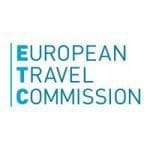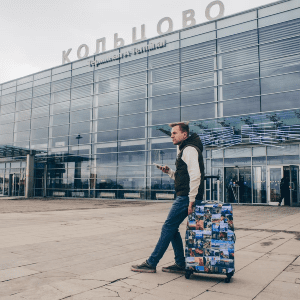The most recent edition of the ‘European Tourism Trends & Prospects’ quarterly report from the European Travel Commission (ETC) predicts that European tourism will demonstrate resilience amidst risks on multiple fronts.
 The report monitors the impact of the COVID-19 pandemic as well as current economic and geopolitical headwinds and anticipates that European tourism will continue recovering in 2022, albeit at a slower pace than previously hoped.
The report monitors the impact of the COVID-19 pandemic as well as current economic and geopolitical headwinds and anticipates that European tourism will continue recovering in 2022, albeit at a slower pace than previously hoped.
In 2022, international tourist arrivals to Europe are forecast to be 30% below 2019 volumes, supported by domestic and short-haul travel. Domestic travel is projected to recover fully in 2022, while international travel is not expected to exceed 2019 levels until 2025.
Despite remaining in negative territory, year-to-date data for Q1 2022 showed that across all reporting destinations, arrivals are estimated to be 43% lower on a weighted basis relative to 2019 – an improvement over the 60% decline observed in the previous quarter. The fastest rebounds based on data to February were reported by Serbia (-11%) and Turkey (-12%). Other destinations recovering at a faster pace based on data to February-March 2022 are Bulgaria (-18%), Austria (-33%), Spain and Monaco (both -34%), and Croatia (-37%).
Commenting following the publication of the report, Luís Araújo, ETC’s President, said: “Over the course of the pandemic, the European tourism sector has become adept at dealing with uncertainties and challenges. The sector is steadily recovering from Covid-19 and there is cause for optimism. Nevertheless, European tourism will have to maintain this fortitude throughout the year as Europe continues to deal with the significant fallout from the ongoing Russo-Ukrainian conflict. ETC calls on EU institutions to continue to provide sufficient and timely financial aid and other support to the sector, especially to destinations heavily reliant on tourism from Russia and Ukraine.”
Covid-19’s Grip on International Travellers is Lessening
The report shows that Covid-19 is ebbing as the primary factor influencing consumer travel plans. Helped by the Covid-19 vaccines and boosters, as well as destinations’ health protocols and certifications, international travellers are now less hesitant about visiting Europe. Many countries, such as Spain, France, and Italy, have removed the requirement for Covid testing prior to travel, conditional on vaccination status. As a result of these actions, Western Europe is forecast to be the best performing region globally this year, albeit 24% below 2019 levels.
The United States remains among the best performers of all long-haul source markets. Annual average growth from the US to Europe is expected to be 33.6% in the five-year period 2021-2026, with the fastest increase observed in Northern Europe (+41.5%). Overall, it remains the case that over 2022 transatlantic travel between the US and Europe will be one of the key drivers of the European travel sector’s recovery.
On the contrary, there have been no immediate signs of Chinese tourist arrivals returning to pre-pandemic levels. China, the world’s largest travel spender, is currently enduring a severe outbreak of the Omicron variant in Shanghai and other big cities, prompting authorities to reimpose strict lockdowns and mandatory testing to suppress the spread of the virus. Over 50% of reporting destinations saw declines of over 90% in Chinese tourist arrivals compared to 2019.
Russo-Ukrainian Conflict to Impact Travel Sector
It is predicted that the Russo-Ukrainian conflict will result in reduced outbound travel from both source markets. In the short-term, neighbouring countries and those most reliant on Russia and Ukraine as source markets will be worst affected in terms of tourism performance. Eastern Europe’s recovery has been pushed back to 2025 due to the conflict, with arrivals now forecast to be 43% lower in 2022 compared to 2019.
The impact of the war could mostly hurt destinations such as Cyprus, Montenegro, Latvia, Finland, Estonia and Lithuania, where Russians made up at least 10% of total inbound travel in 2019. Beyond the visitor impacts, Russian tourists tend to be high spenders meaning that an even larger impact will be felt in terms of tourism expenditure in these destinations. In 2019, Russian spending contributed to 34% of total expenditure in Montenegro, 25% in Cyprus and 16% in Latvia. Overall, no immediate recovery is expected for countries with a high reliance on Russian tourism in the near-term.
Besides the direct effects of reduced travel both from Russia and Ukraine, the conflict has created other problems for the European travel sector. The inflationary effect of economic sanctions on Russia will continue to exacerbate rising jet fuel prices and may cause airfare price hikes this year. Other rising costs, such as food, may erode consumer demand and further impact travel in a range of markets. Additionally, the closure of Russian, Ukrainian, Moldovan, and Belarussian airspace to most Western European carriers will impact European-Asian air connectivity.
Moreover, the impact of the war in Ukraine could affect travel sentiment to Europe from overseas markets. A recent survey conducted by MMGY Travel Intelligence[1] indicates that 62% of US travellers planning to visit Europe stated concerns about the war in Ukraine spreading to nearby countries as a factor impacting plans, which is double the number of respondents that mentioned Covid-19 health and safety concerns as a factor. Nevertheless, the US is expected to remain among the top performers in 2022 compared to other long-haul source markets.
The summary report can be downloaded from ETC’s corporate website under the following link: https://etc-corporate.org/reports/european-tourism-2022-trends-prospects-q1-2022/
































